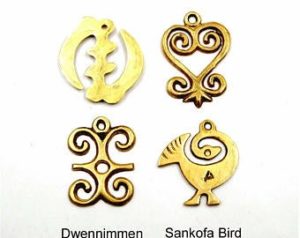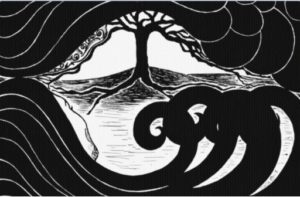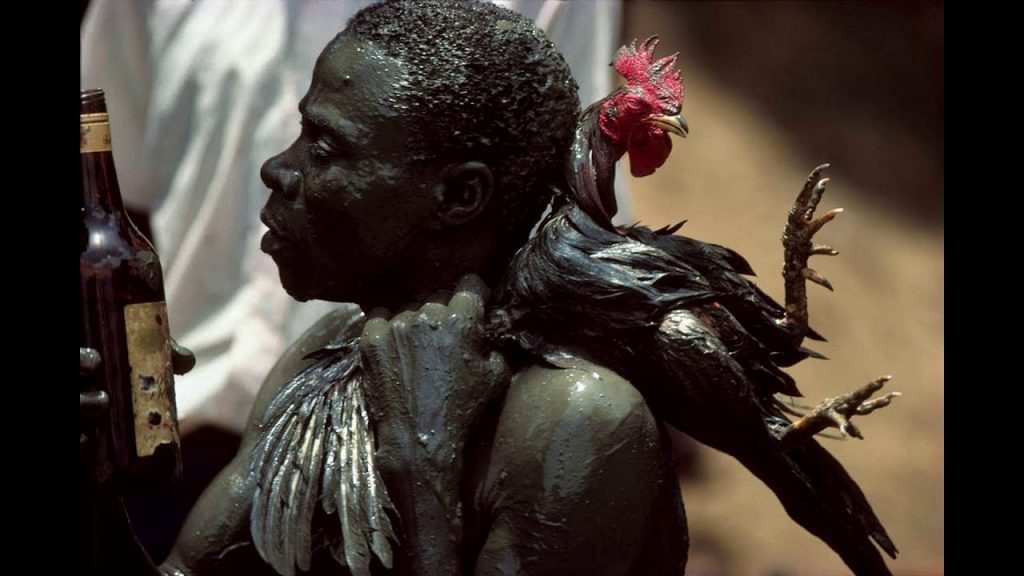
“Bayi” is the word for “witchcraft” in the Akan language. “Obayifo”/”Abayifo” used in the current Akan language means “person who practices witchcraft”. I say this because both words have roots that are associated with witchcraft, one among the Akan in west Africa and the other among Jamaicans in the Caribbean, some of whom are descendants of Akans sent there.
“Obeah” also can be seen as meaning “woman” or a short for “witch woman”, and in fact some Akan groups such as the Akuapem and perhaps even the Akwamu do not say “obaa” but rather “obeah” when they refer to “woman”.
As the image at the head of this article shows, “obeah” involves not only women. Indeed, “obeah” includes men as well, as the photo at the start of this article shows. In this article, I explore “obeah”, a form of spirituality practiced by descendants of Akan people who were sent from West Africa to Jamaica. I will explore the structure of “obeah” and its relations to witchcraft practiced in Ghana.
I originally wrote and published this article on theakan.com in July 2011. I have edited and extended it in order to re-introduce it at this later time on the same website.
ARE THE WORDS “BAYI” AND “OBEAH” RELATED?
Question: Could it be that “Obeah” and “Bayi” are actually linked? This seems to be the case. How many people actually know that “Obeah” and “Obeahfo” are the same thing? They both refer to “woman” (see Christaller’s dictionary definitions below).
Christaller’s Dictionary (1933: pg. 2):
o-baa, pi. m-, Ak. F. woman, female == obea, o(baa)basia; cf. abaawa. pr.
o-babaa, pi. m-, Ak. F. [oba, child, obaa, woman] daughter = obabea.
ababaa, ababawa, Aky. abayewa, pi. m-, maiden, young woman, married or not, who has not yet given birth to a child; syn. abeafo.
Christaller’s Dictionary (1933: pg. 12)
abeafo, pi. m-, a lovely young woman, neatly, nicely dressed.
Christaller’s dictionary (1933: p.11)
bayi (abayide, abayigoru, abayisɛm) witchcraft, sorcery; yɛ or dew bayi, to practise witchcraft; -b. yɛ abusuade, witchcraft is inborn, innate, hereditary Ɔbayifo, pi. a-, witch, hag; wizard, sorcerer.
So, from Christaller’s dictionary, we find that there are several words connecting the words obaa/obea/abeafo, and its variations, with woman. There is also bayi, and its various synonyms that link with witchcraft and sorcery. It appears then, that in the Akan language, the words for witchcraft and woman are different, however in Jamaica, the word for witchcraft, “obeah”, is similar or identical to the word for woman in the Akan language. There are however similarities between the words “bayi/obayi”, and “obeah”.
Let’s now go over to the Jamaican side, to learn more about “obeah”.
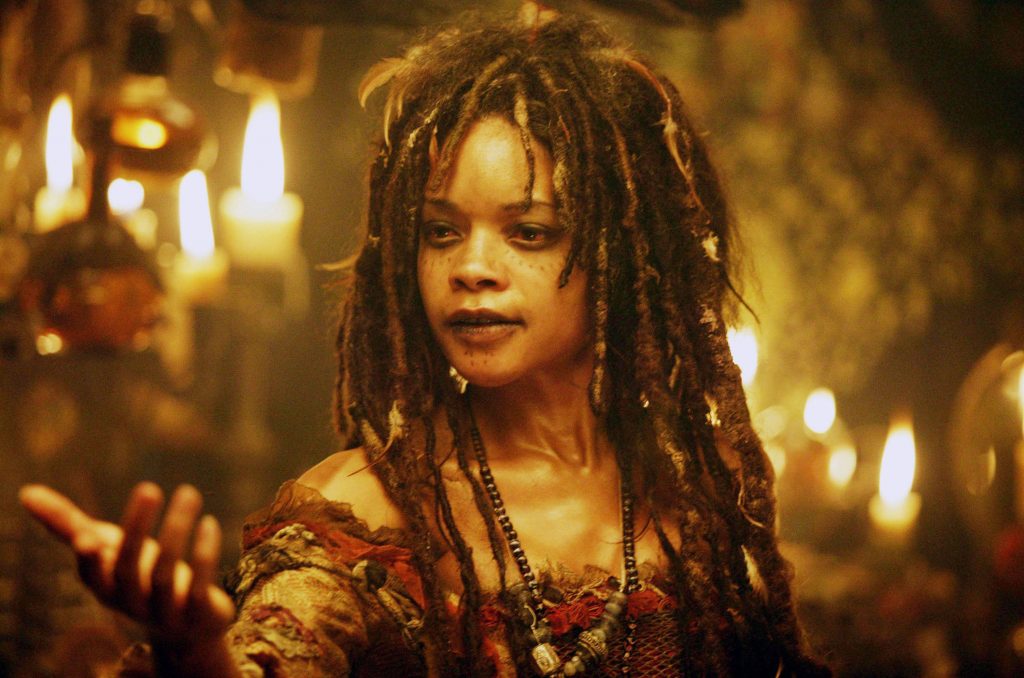
JOSEPH WILLIAMS ON OBEAH AND ON VOODOO
In his book Voodoos and Obeas, Joseph Williams has this to say,
“The Jamaica term Obeah is unquestionably derived from the Ashanti word Obayifo, which according to Captain Rattray signifies “a wizard, or more generally a witch.”…”Dropping the suffix, then, from Obayifo, the resulting Obayi, as heard from the lips of the Koromantin slaves (shown to be Ashanti, at least as regards their leading spirits), was variously rendered by the Jamaican whites as obeah, obia, etc. For even now there is no agreement as to the correct spelling of the word. . . . Both with the Ashanti themselves and their descendants in Jamaica the word is commonly shortened into Obi. Thus we find the Obi country referred to in the history of the Ashanti Fetish Priest, Okomfo-Anotchi, that is Anotchi the priest.”
So “Obi” is a corruption of “Obayi”…which is witchcraft in Akan, the practitioner of which is called “Obayi-fo” (meaning “Obayi” (witchcraft) “fo” (person)
In chapter 4 of the text “Voodoos and Obeahs: Phases of West African Witchcraft” (Joseph J. Williams, 1932), we have the following excerpt:
“And there is another important difference between Voudou and Obeah, and that is that Voudou requires for the celebration of its rites a priestess and a priest. Obeah can be worked by either [i.e. priestess or priest] alone, and is [not] tied to the presence of the snake. Both these cults have sprung from slaves imported from Ellis’s district, Obeah from slaves bought at Koromantin mainly, and Voudou from those bought at Dahomey. Nevertheless it seems to me these good people have differentiated their religion in the West Indies considerably; for example, in Obeah the spider (anansi) has a position given it equal to that of the snake in Voudou.“
There are two points of note here. First is the connection with Anansi, the spider. Anansi is the trickster character in Akan lore. It is also the character that teaches Akan people wisdom through stories about its exploits. That obeah is associated with Anansi lends further credence to obeah having been derived from Akan people originally brought to Jamaica from West Africa. The second point is that obeah can be practiced by either a man (a priest) or a woman (a priestess). This, to me, says that the obeah man or woman is akin to a medicine man or woman, in other cultures.
This book by Joseph Williams in part ridicules natives of that period for totally believing in and practicing their spirituality, a common trait among Europeans of the time who were in fact exposing their cluelessness about the spirituality of others. The general attitude of early Europeans toward the culture and in particular the spiritualty of non-European people they encountered is a topic I address in section 5.16 of The Akan, Other Africans & The Sirius Star System. Rattray who worked closely with the Asante people was one of the notable exceptions to this rule.
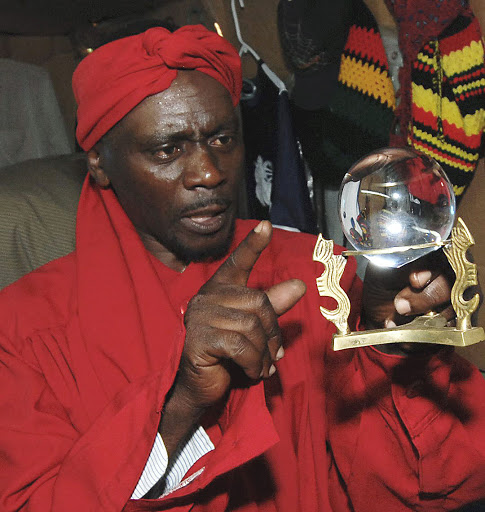
OBEAH TRACES TO AKAN WHILE VOODOO TRACES TO EWE/FON
Now, to continue some more on obeah and on voodoo. In regard to obeah and a quote above from Joseph Williams, “koromantin” of course is a ‘code word’ that refers to Akan people as has previously been shown in The Akan, Other Africans & the Sirius Star System (sections 3.2 and 3.3) so Obeah originates from the Akan. Voodoo on the other hand originates from the Ewe and the Fon people. In chapter 2 of his book, Joseph Williams talks about how the king of Whydah was in attendance at the voodoo oracle in Africa. Here, the Whydah is really Ouidah, the capital city of the Kingdom of Dahomey in present day Benin. The people of Dahomey were led by the Fon, who were the dominant group at the time of the kingdom. It is well to also point out that voodoo is correctly spelt as vodun, a word meaning “spirit” in the Aja, Ewe and Fon languages of the same people found in Benin, Ghana, Nigeria and Togo.
Continuing, obeah or witchcraft is very much like a form of ‘shamanism’. The witches can astral travel, they have spirit helpers and other abilities such as clairvoyance. They also work with some nature spirits such as the mmoetia/kontomble (i.e. dwarves/gnomes) and other spiritual beings. This is an individual path which can also be practiced in a community. Powers can be used to help or to harm.
Voodoo/vodun, on the other hand, is more ceremonial and ritualistic, where the powers are solicited from external nature spirit entities through ritual. This is more along the lines of ceremonial magic or sorcery and is different from ‘abeyisɛm’ (witchcraft) where the obayifo (witch) uses his or her own etheric-astral body to cause non-ordinary effects. I think this distinction is an important one to be made. The practitioner of voodoo could also have ‘witchcraft powers’ but not necessarily.
AKAN ABEYISƐM PRACTICES ARE IDENTICAL TO JAMAICAN OBEAH PRACTICES
In chapter 4 of Williams’ book, he gives an andecdote of an alleged practitioner of Obeah (i.e. a witch) who use ‘witchcraft pots’ just like Abayifo of the Akan do. Here is the story:
“The other Negroes of the plantation no sooner heard of this impeachment, than they ran in a body to their master, and confirmed the truth of it, adding that she had carried on this business since her arrival from Africa and was the terror of the whole neighborhood. Upon this he repaired directly with six white servants to the old woman’s house, and forcing open the door, observed the whole inside of the roof (which was of thatch), and every crevice of the walls stuck with the implements of her trade, consisting of rags, feathers, bones of cats, and a thousand other articles. Examining further, a large earthen pot or jar, close covered, was found concealed under her bed.–It contained a prodigious quantity of round balls of earth or clay of various dimensions, large and small, whitened on the outside, and variously compounded, some with hair and rags and feathers of all sorts, and strongly bound with twine; others blended with the upper section of the skulls of cats, or stuck round with cats teeth and claws, or with human or dogs teeth, and some glass beads of different colours; there were also a great many eggshells filled with a viscous or gummy substance, the qualities of which he neglected to examine, and many little bags stuffed with a variety of articles the particulars of which cannot at this distance of time be recollected. The house was instantly pulled down, and with the whole of its contents committed to the flames, amidst the general acclamation of all the other Negroes. In regard to the old woman, he declined bringing her to trial under the Law of the island, which would have punished her with death; but from a principle of humanity, delivered her into the hands of a party of Spaniards, who (as she was thought not incapable of doing some trifling kind of work) were very glad to accept and carry her with them to Cuba.“
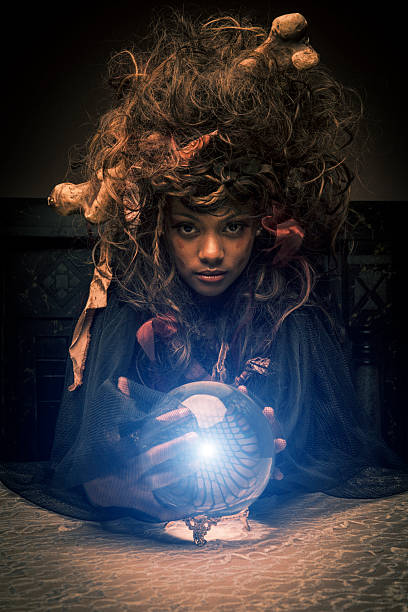
Here I particularly want to bring the reader’s attention to the contents of the ‘witch pot’. If we are to take this story at face value, then what was done with obeah in the Caribbean is still done with bayi among Akan people in present day West Africa. That is, the use of various physical objects that are kept in an earthenware pot. Here is another description of Abayifo/witchcraft, this time from Debrunner writing about people found in present day Ghana:
“[A witch pot] a may contain a knife, a millipede, a man’s heart, some fingers and a talisman and is sprinkled with a man’s blood. Some witches keep them (the pot) in the fork of a tree. Others hide them either inside the trunk of a tree or inside their stomachs“
So in essence a ‘witch pot’ is similar to a ‘medicine bag’ used by some African and Indigenous American groups for instance. The contents of the medicine bag are ‘objects of power’, same as one can find in a ‘witch pot’.
Despite his own attitudes or beliefs, Williams seems to indicate in his writing that the obeah men were both feared and revered by their fellow black men. From the description below, it would appear that an obeah man is man of knowledge, about herbs, about spiritual things. A medicine man, therefore:
“Obeah men are the oldest and most artful Negroes; a peculiarity marks them, and every Negro pays the greatest respect to them, they are perfectly well acquainted with medicinal herbs, and know the poisonous ones, which they often use. To prepossess the stranger in favor of their skill, he is told that they can restore the dead to life; for this purpose he is shown a Negro apparently dead, who, by dint of their art, soon recovers; this is produced by administering the narcotic juice of vegetables. On searching one of the Obeah men’s houses, was found many bags filled with parts of animals, vegetables, and earth, which the Negroes who attended at the sight of, were struck with terror, and begged that they might be christened, which was done, and the impression was done away. In consequence of the rebellion of the Negroes in the year 1760, a Law was enacted that year to render the practice of Obeah, death.“
So in fear the controllers of Jamaica at the time decided to outlaw Obeah.
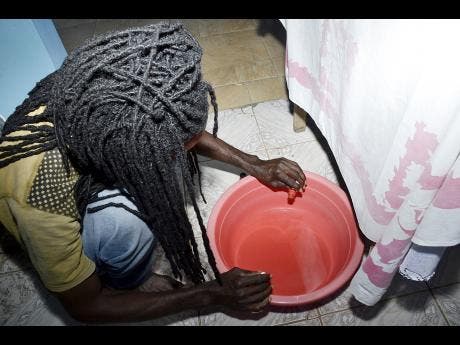
References
Religion and art in Ashanti [WorldCat]
The Practice of Witchcraft in Ghana [Google scholar]
Don’t cry, my baby, don’t cry! [Google scholar]

